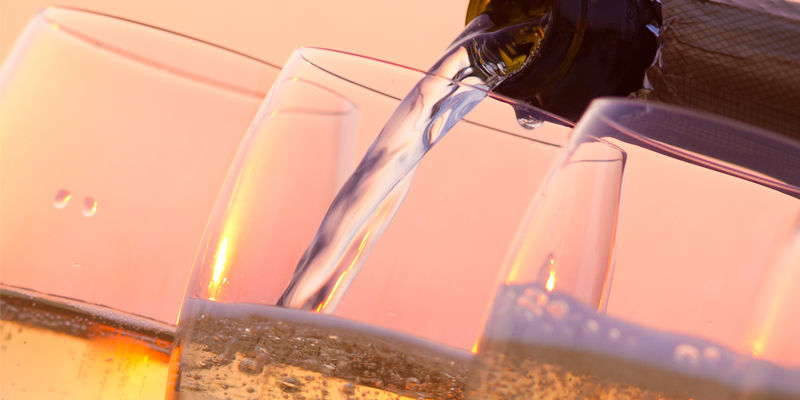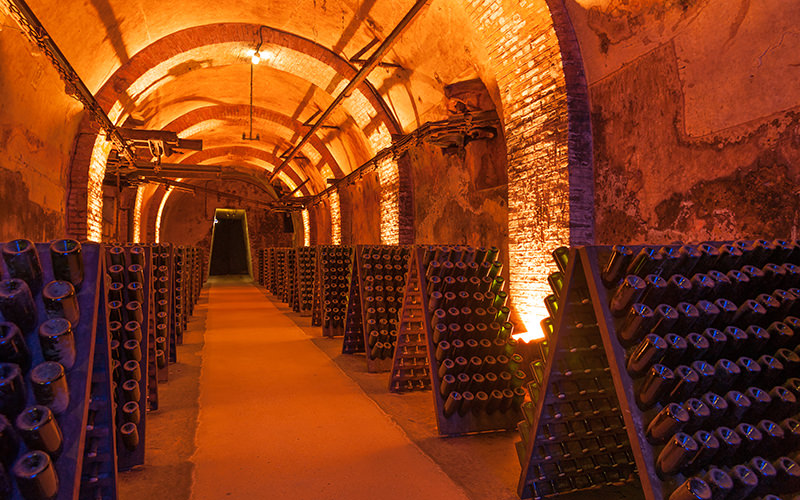At a recent tasting with the winemaker from a prominent Champagne house, the inevitable subject of dosage – the sugar solution added after the secondary fermentation and disgorgement and before final corking and shipping – came up early in our discussion of the wines. Dosage determines the category, the most common being Brut, which allows up to 12 grams per liter of the concoction in the final wine. Sounds sweet, right? It’s actually perceivably dry. That’s because Champagne undosed is usually highly acidic, the result of growing in a cold, marginal climate. (Coca-Cola contains over 100 grams per liter of sugar for point of comparison.) Their dosage, the winemaker said, has been gradually reduced over the past five years, the non-vintage Brut down from the maximum allowable 12 grams per liter to just nine grams today. Even so, I had discreetly scrawled in my notebook that the dosage was “noticeable” – my shorthand diplomatic way of saying I found it cloying.
As I continued to swirl, sniff, sip, and write, I began to wonder whether that criterion – that I simply noticed the dosage – was a little more than unfair. Sure, the wine in our glasses wasn’t exactly one that ranks high on the scale of sommelier street cred. Its commercial success is due largely to brand recognition and wide availability. It’s the sort of large-house Champagne that sits in stark contrast to the grower bottles – many in the low- to no-dosage Extra Brut, Brut Nature, and Brut Zéro styles – that have taken restaurant wine lists across the country by storm. But, the Champagne region has a long history of adding sugar to its final products for numerous legitimate reasons that have nothing to do with a stylistic preference for sweetness. What’s so bad about a heavy-handed dosage? I reached out to some sommelier friends for their take on what’s driving the demand for even drier styles of Champagne – and whether that bubble may soon burst.
In the same way that a couple years ago a guest might refer to a house style, saying, ‘I like a Taittinger or a Billecart-Salmon,’ they’re now saying, ‘I like an Extra Brut.’
“In general, people are enjoying things that are more acid-driven and less sugary,” says Jack Mason of Marta in Manhattan, hinting at the steady decline in sales for wines with residual sugar. For better or worse our palates have veered dry. Rarely do drinkers order dessert wine, and Riesling’s rise in popularity has been largely due to its dry rather than off-dry versions. “For Champagne,” Mason says, “the new style is very much this lean, focused, crisp, refreshing style.” His wine list boasts an impressive selection of Champagnes, ranging from those lean bottles to richer styles, vintage-dated and non-vintage cuvées, and from Chardonnay-dominant versions to the all-Pinot Blanc de Noirs category, which he pairs with variously topped pizzas. “To be honest, I don’t’ really care about dosage at all; I care about a balanced wine,” he continues. “The producers know how much dosage it takes to make their Champagnes balanced. Take Jacques Lassaigne. He nails the Brut Nature style. Those wines are incredibly balanced and delicious with no dosage. But Vilmart … Those are rich, ripe wines that definitely see dosage, but they’re balanced and really good, too.”
A few short blocks away at The NoMad Hotel, Thomas Pastuszak has found that a younger generation of drinkers now understands what dosage means and knows what to expect from a Brut versus Extra Brut Champagne. “In the same way that a couple years ago a guest might refer to a house style, saying, ‘I like a Taittinger or a Billecart-Salmon,’ they’re now saying, ‘I like an Extra Brut.’” But the trend toward low- and no-dosage Champagnes might go deeper than just the stigma of sweetness. “I think that people are looking for purity of expression,” he says, “and there’s this idea out there that when you see Extra Brut or Brut Nature on a label, it means it’s the purest expression you can have. They see it as the winemaker wanting to be as transparent and the wine as unadulterated as possible.” And a wine with a higher dosage? Old-fashioned. Manipulated.
David Speers of Ambonnay Champagne Bar in Portland, Oregon (that’s right, an entire bar dedicated to Champagne) has noticed it, too. “A lot of people come in wanting dry and very dry Champagnes,” he says, “which is a shame because a bit of sugar can help with the overall balance of the wines. Speers explains to customers that there are many ways dosage can impact a wine and that more sugar doesn’t necessarily mean it will be perceived as sweeter. Belinda Chang of Maple & Ash in Chicago echoes the same concern. “I did a seminar called Wines and Whips, inspired by my distaste for “S&M” wines, and in most cases the ‘zero dosage, rip-the-enamel-off-your-teeth’ Champagnes fit this category,” she says. Chang represents the Brut Nature style on her wine list but admits that finding a practical application for it in pairing can be difficult. “It reminds me of having to adjust wine pairings when I have worked for chefs serving unbalanced dishes,” she says. “Super-high-acid dishes always need wine with a little residual sugar to balance, and likewise, the food has to compensate for the sauvage style of these Champagnes.”
Evidence suggests that we may have already seen the most extreme of the Extra Brut craze and that the pendulum is slowly swinging back – not to overtly sweet styles but to a place, as Mason put it, of balance. “Where the conversation is with the wine pros right now is where it will be for the general public in a few years,” says Pastuszak. “And that’s that we appreciate a Champagne because the producer is great, the vineyard site is great, and because of their farming, methodology, and all the hard work that went into it. Those factors are much more important to the discussion than what amount of sugar is put into the bottle.” He adds that all styles have their place in the meal, so the context plays a large role in the enjoyment of Champagne. While one might be a great aperitif Champagne, another richer style might be great with an entrée. “I think about weight and texture for Champagne in the same way I think about other wines and their progression in a meal,” he says. As for me, while I’ve been known to sip Extra Brut from time to time, I won’t let myself be deterred from more unctuous wines. And I’ll amend my off-putting dosage description from “noticeable” to “not integrated.”


